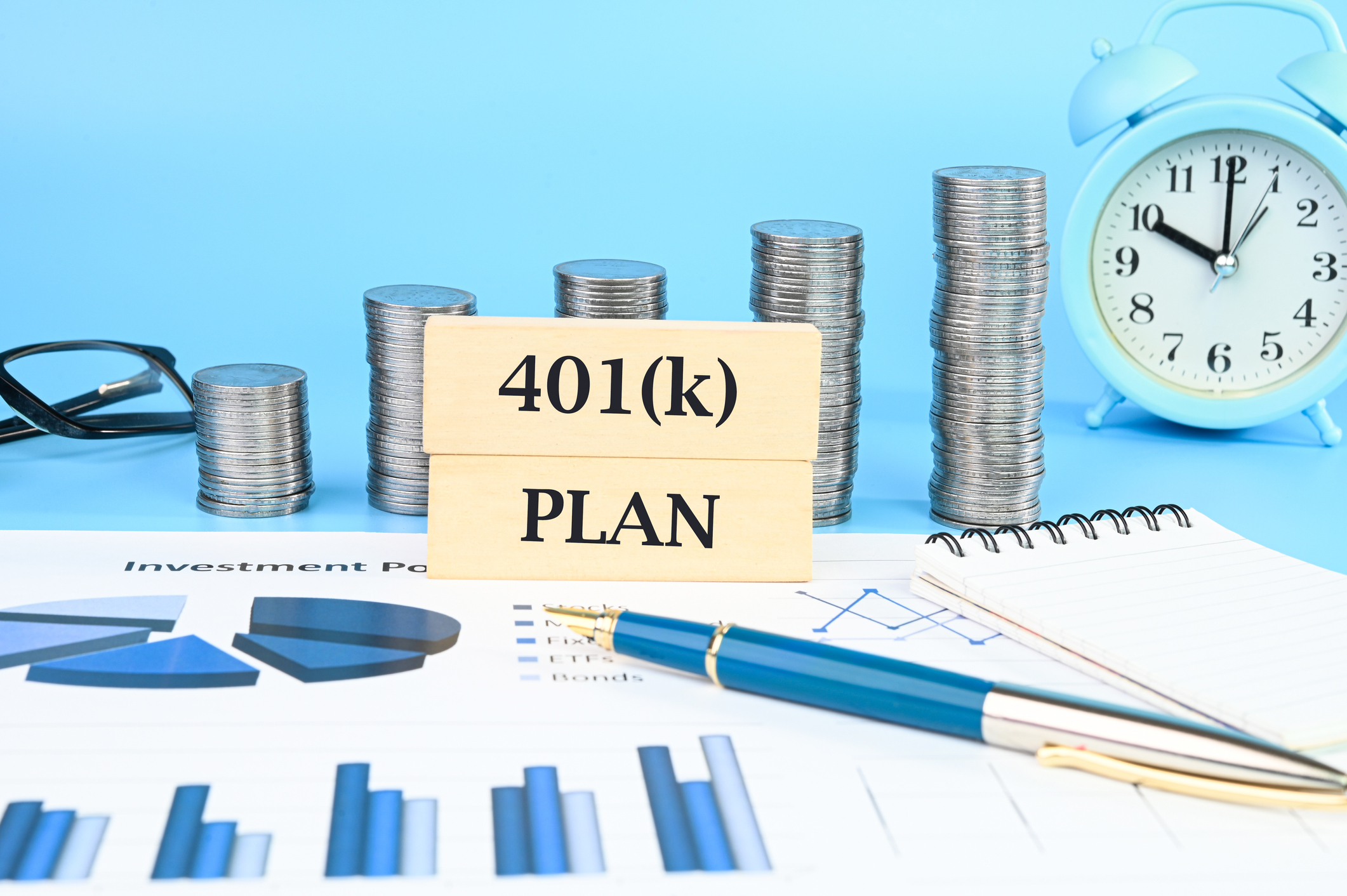Investments That Pay You Every Month
Expect a steady flow of cash from these three portfolios.

Your bills are due every month. I know mine are. Most of you have to pay rent or the mortgage and utilities. You may have to make car payments and pay insurance premiums. You probably have to pay your credit-card bill, too.
Yet the majority of income investments pay less frequently. Stocks generally declare dividends quarterly. Treasury securities and nearly all municipal bonds send you interest every six months. First Financial Fund (symbol FF), a high-yielding closed-end fund that mostly owns bank and insurance stocks, distributes cash just once a year -- around Christmas -- although virtually all of its holdings pay quarterly dividends.
A nit-picker will argue that waiting six months or a year for your money cuts the true yield on your investment. Money you can reinvest immediately does in fact compound at a higher rate. In real life, however, the main advantage of receiving frequent and regular paychecks is convenience. If you supplement pension and annuity income and Social Security checks with investment income, what matters is how your monthly obligations and inflows match up, not the few extra cups of coffee you can buy from putting away $250 monthly rather than $1,500 twice a year.
From just $107.88 $24.99 for Kiplinger Personal Finance
Be a smarter, better informed investor.

Sign up for Kiplinger’s Free Newsletters
Profit and prosper with the best of expert advice on investing, taxes, retirement, personal finance and more - straight to your e-mail.
Profit and prosper with the best of expert advice - straight to your e-mail.
Now here's the good news. It's really not that hard to assemble a portfolio of income-generating investments that will pay you every month. Exchange-traded bond funds pay monthly. Most of Vanguard's bond funds, whether in the format of regular funds or ETFs, make monthly distributions. So do many funds that invest in Ginnie Mae mortgage securities.
Some well-known mutual funds have increased the frequency of their distributions. In mid-2007, Loomis Sayles Global Bond Fund (LSGLX), which had made distributions annually, switched to a monthly payout schedule. And Loomis Sayles Bond Fund (LSBRX) switch from quarterly to monthly payouts. Loomis Sayles did this in its belief that retirees, who are big bond-fund customers, prefer to time their income to match the demands on their checkbooks.
Most real estate investment trusts follow the schedule of the typical common stock and pay dividends quarterly. One exception is Realty Income Corp. (O), which makes distributions every month (in fact, it has trademarked the slogan The Monthly Dividend Company). Realty Income can regularly raise its dividend because its leases include escalator clauses and require the REIT's retail tenants to pay rent, property taxes, insurance and maintenance on a monthly basis.
Oil and gas royalty trusts and master limited partnerships generally also pay every month. This is not only because storing and transmitting natural gas and selling oil are round-the-clock activities. MLPs and trusts are essentially conduits. They don't have much overhead, formal management committees to hem and haw over dividend decisions, or any reason to sit on cash flow from operations. The law requires them to pay out virtually all income or lose their tax-advantaged status.
Knowing all this and assuming that you find a predictable monthly income stream appealing, how do you use this information? The answer: You assemble a suitable portfolio that passes through a certain amount of monthly income.
Obviously, the more money you want to draw, the more risk you'll likely have to take. If you shove all your principal into oil and gas trusts, which recently have paid much higher yields than bonds or REITs -- and oil prices continue their recent descent -- you'll lose more principal than if you combine energy investments with other income-oriented investments.
Here are three sample monthly income portfolios, in descending order of risk and yield. We'll assume that you're 65, in good health and investing $100,000. Your benchmark is the guaranteed income you can get by investing $100,000 in a fixed-rate income annuity. Nowadays, a 65-year-old man can get a monthly benefit for life of $675, or $8,100 a year (essentially an 8.1% cash return). A woman settles for $630 because of her longer life expectancy. That works to $7,560, or 7.6%. To keep the numbers simple, let's call $700 a month the center point.
But annuities come with some baggage. Annuity income is taxable at ordinary income rates. The principal of fixed annuities can't grow. And annuity contracts are either irrevocable or costly to change. So any income portfolio that pays at least $700 a month without incurring frightening risks is worth considering instead. A high-risk income portfolio should provide more, perhaps a grand a month or close to it. A super-cautious assortment should still deliver $500 a month. That's a 6% return, well above the 4% yield of Treasury bonds.
Shooting the moon: $1,000 a month
The highest monthly payers by far are energy-income pass-throughs and leveraged closed-end funds. Because $1,000 a month is a 12% yield on $100,000 in savings, the question is how to pursue that payoff without literally putting all of your hopes on continually rising oil and natural gas prices.
So try this: Half your money in energy, half in other stuff. The latter would include real estate, international bonds, foreign currencies and floating-rate bank-loan funds. The rub is that you probably will need to resort to leveraged closed-end funds for the non-energy categories. That will widen your principal losses if the value of the fund's securities sinks, although you'll probably still get the income payments. So only try this with the understanding that your principal will bounce around. And certainly don't put anywhere close to all of your money in this group.
Here's the plan:
50% Energy trusts (average yield 12%). Pick at least three from a group that includes such proven names as Harvest Energy (HTE), Enerplus Resources (ERF), Cross Timbers Royalty Trust (CRT), Hugoton Royalty Trust (HGT), San Juan Basin Royalty Trust (SJT) or Penn West Energy Trust (PWE). Each month they pass along cash from the sale of oil and natural gas from known reserves. As long as oil and gas prices, as well as consumption, stay high, you'll get big payments each month.
20% closed-end floating rate bank-loan funds (average yield 8%). These had problems during the worst of the credit crunch in 2007, and share prices are generally down about 20% in a year. But they've also mainly settled down of late, with the share prices of such funds as Pimco Floating Rate Income (PFL) still bouncing around but with the funds generating enough income to cover their high dividends.
PFL is 40% leveraged. At its July 22 closing price of $14.54, it yielded 8.4%, based on its last two monthly dividends of 10 cents a share. If short-term interest rates rise (either because the economy improves or the Federal Reserve Board feels compelled to get tough on inflation), the dividend could rise. For safety you could pair this with the similar Eaton Vance Senior Floating Rate Trust (EFR), which yields about the same and is also 40% leveraged but has a different mix of industries in its loan portfolio. High risk, high income.
20% real estate investments (average yield 7%). If you buy REITs directly you won't get paid monthly, or you won't get much of a yield. But Realty Income is such a dividend machine and its holdings are so spread out that it provides as much diversification as you might get with five other REITs.
10% foreign income funds (average yield 7%). The Aberdeen twins, Aberdeen Global Income Fund (FCO) and Aberdeen Asia-Pacific Income Fund (FAX) generate yields of about 7% apiece by investing in short-to-medium maturity bonds issued in Australian, New Zealand, and other Asian countries. FCO is more global, with bonds from Canada, Latin America and Britain. The share prices and monthly dividends have generally been stable for two decades.
At today's yields, you can expect to get $6,000 a year from the energy picks, $1,600 from the floating-loan funds, $1,400 from the real estate and another $1,400 from the foreign bonds. This doesn't quite add up to $1,000 a month, but the odds are good that one or more of these investments will raise its payout before long. For now, $867 or so a month is the best you can do without taking on outrageous risks.
Holding the center: $700 a month
To earn $8,400 a year, or 8.4% all told, you can afford to mix in more mainstream stock and bond investments while you rely on energy trusts and floating-rate funds to do the heavy lifting. Instead of investing half your money in energy, go down to 30%; that still gets you a good shot at $3,600, or $300 a month. To pull $4,800 from the remaining $70,000, you need to average 6.8%. That's not easy, but you can do it without migraines. The plan:
30% energy trusts (see above).
20% bank-loan funds (see above). The difference between shooting for the moon and holding the center is that you can hedge your risks in this category with Fidelity Floating Rate High Income (FFRHX). It is a proven open-end (regular) fund that pays out monthly and currently yields 5.2%. If you invest $10K in Fidelity and divide the other $10K between the Pimco and Eaton Vance closed-ends, you'll net 6.8% from this category.
15% foreign income funds. Money in the Aberdeen duo is at great risk mainly if the U.S. dollar rises from the ashes. Not likely. Figure on 7% from each of these funds.
10% real estate. Figure on a regular 7% inflow from Realty Income.
25% domestic bonds. You'll need to bring in $1,750, or a return of about 7%, from this group. That might be a tad ambitious, so you may choose to come up a little short or to spice things up with some corporate bonds, some perhaps of the junky variety. Any combination of good, reliable high-quality bond funds such as those from Vanguard or Loomis Sayles, or an ETF such as iShares iBoxx Investment Grade Corporate Bond Fund (LQD) will serve your purposes. You'll probably end up around 6%, but that's not bad.
The thing to avoid is long-term Treasury bonds. Their yields are too low to justify the risks.
Taking no chances: $500 a month
We could make this really easy: The yield on the Vanguard Total Bond Market Index Fund (VBMFX), which pays monthly, it presently 4.7%. That's not enough to get $500 a month, or $6,000 a year, but it's a reasonable starting point.
So here's the plan: Take half of the money and put it in monthly-distribution bond funds. That'll get you between 5% and 6%, depending on the type of bonds. If you opt for more safety and less yield, let's call it 5%. If you invest $50,000 for 5%, that's $2,500, or a hair better than $200 a month.
You need to take in $300 a month on the remaining $50,000. That's 7%. As we've seen, any reasonable amalgamation of oil and gas trusts, bank loan funds (opting here for the non-leveraged kind) and foreign bonds should suffice.
You might also make some room for Power Shares High Yield Dividend Achievers (PEY). It has lost more than 25% this year because it owns a lot of hard-hit bank stocks, some of which have also cut their dividends. As a result, the ETF's monthly distribution rate has come down from 5 cents a share to closer to 4.
But the worst may be over for financial stocks, so a little of this fund, which at its July 22 close of $9.65, yields 5.2%, can enliven a conservative income mix. So put it in the stew with some energy trusts and maybe some Aberdeen. Just don't peek at the daily value of your fund shares. The market remains volatile. And that's a good reason why cash ought to be, if not king, at least something to cherish.
Profit and prosper with the best of Kiplinger's advice on investing, taxes, retirement, personal finance and much more. Delivered daily. Enter your email in the box and click Sign Me Up.

Kosnett is the editor of Kiplinger Investing for Income and writes the "Cash in Hand" column for Kiplinger Personal Finance. He is an income-investing expert who covers bonds, real estate investment trusts, oil and gas income deals, dividend stocks and anything else that pays interest and dividends. He joined Kiplinger in 1981 after six years in newspapers, including the Baltimore Sun. He is a 1976 journalism graduate from the Medill School at Northwestern University and completed an executive program at the Carnegie-Mellon University business school in 1978.
-
 Dow Dives 797 Points as Government Opens: Stock Market Today
Dow Dives 797 Points as Government Opens: Stock Market TodayThe process of pricing and re-pricing realities old and new never stops, and next week promises to be at least as exciting as this week.
-
 3 Ways High-Income Earners Can Maximize Their Charitable Donations in 2025
3 Ways High-Income Earners Can Maximize Their Charitable Donations in 2025Tax Deductions New charitable giving tax rules will soon lower your deduction for donations to charity — here’s what you should do now.
-
 The Most Tax-Friendly States for Investing in 2025 (Hint: There Are Two)
The Most Tax-Friendly States for Investing in 2025 (Hint: There Are Two)State Taxes Living in one of these places could lower your 2025 investment taxes — especially if you invest in real estate.
-
 The Final Countdown for Retirees with Investment Income
The Final Countdown for Retirees with Investment IncomeRetirement Tax Don’t assume Social Security withholding is enough. Some retirement income may require a quarterly estimated tax payment by the September 15 deadline.
-
 Smart Ways to Invest Your Money This Year
Smart Ways to Invest Your Money This YearFollowing a red-hot run for the equities market, folks are looking for smart ways to invest this year. Stocks, bonds and CDs all have something to offer in 2024.
-
 Vanguard's New International Fund Targets Dividend Growth
Vanguard's New International Fund Targets Dividend GrowthInvestors may be skittish about buying international stocks, but this new Vanguard fund that targets stable dividend growers could ease their minds.
-
 Best 401(k) Investments: Where to Invest
Best 401(k) Investments: Where to InvestKnowing where to find the best 401(k) investments to put your money can be difficult. Here, we rank 10 of the largest retirement funds.
-
 7 Best Stocks to Gift Your Grandchildren
7 Best Stocks to Gift Your GrandchildrenThe best stocks to give your grandchildren have certain qualities in common.
-
 How to Find the Best 401(k) Investments
How to Find the Best 401(k) InvestmentsMany folks are likely wondering how to find the best 401(k) investments after signing up for their company's retirement plan. Here's where to get started.
-
 How to Master Index Investing
How to Master Index InvestingIndex investing allows market participants the ability to build their ideal portfolios using baskets of stocks and bonds. Here's how it works.